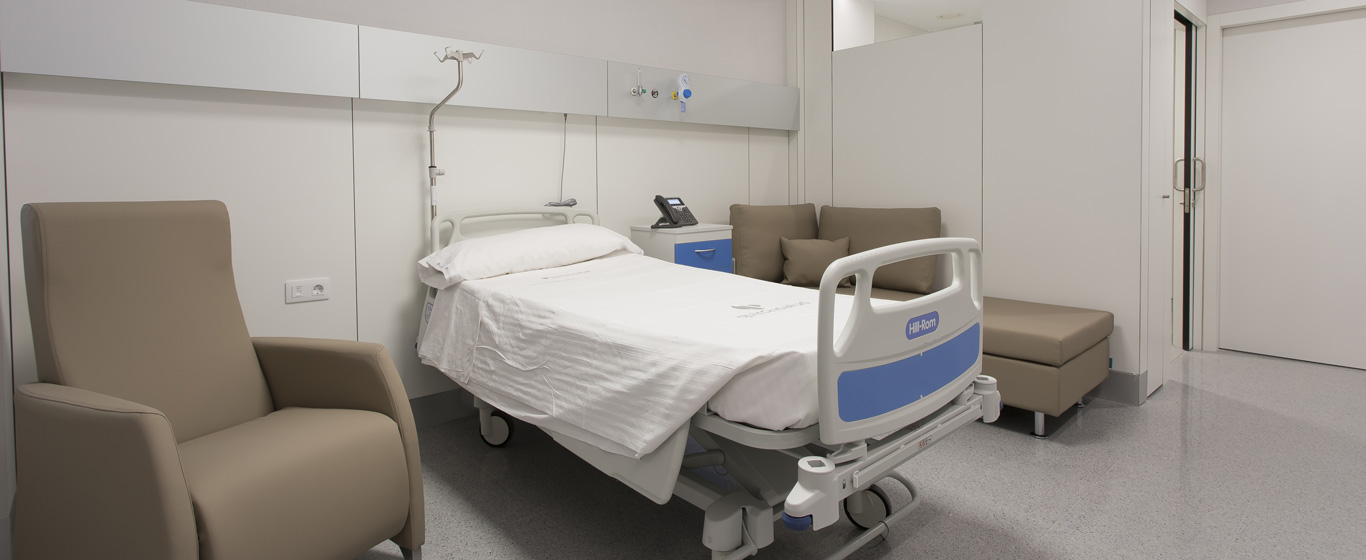Radiculopathies
Does radiculopathy have a cure? All the information about the causes, symptoms, and treatments of this disorder.
Symptoms and Causes
Radiculopathy is a neurological condition caused by compression or damage to the nerve roots emerging from the spinal cord, which triggers symptoms in the area of the body innervated by the affected nerve.
Depending on the area where the nerve damage occurs, three types of radiculopathies are distinguished:
- Cervical radiculopathy: The damaged nerve root is located in the neck area.
- Dorsal radiculopathy: The affected nerve is located in the thoracic area of the back. This is rare.
- Lumbar radiculopathy: It affects a nerve in the lower back. This is the most common type.
Symptoms
The symptoms manifest both in the affected area of the back and in the region of the body where the damaged nerve reaches. The most common symptoms are:
- Sharp pain radiating from the spine, following the nerve’s path.
- Tingling or numbness.
- Muscle weakness.
- Decreased reflexes.
- Difficulty controlling muscle movement.
Radiculopathy usually presents unilateral symptoms, meaning it affects one side of the body more than the other. Depending on the severity of the symptoms, three degrees of radiculopathy are considered:
- Grade I: Mild symptoms including pain, weakness, and numbness.
- Grade II: Moderate symptoms, with partial loss of muscle reflex.
- Grade III: Severe symptoms, with complete loss of muscle reflex.
Causes
The most common cause of radiculopathies is the degenerative processes of the spine, which cause changes in the tissues and structures surrounding the nerve roots, such as the vertebrae, intervertebral discs, and the spinal canal. The most common wear-and-tear processes are:
- Herniated disc: The nucleus of the intervertebral disc shifts and, if it protrudes from the vertebral canal, it may compress a nerve.
- Spinal stenosis: The spinal canal narrows and may compress the nerve roots.
- Bone spurs or osteophytes: The body responds to disc wear by forming areas of additional bone growth, narrowing the nerve root outlet and trapping it.
- Osteoarthritis: Inflammation and excessive bone growth caused by osteoarthritis may compress the nerves.
- Spondylosis: Causes wear in the discs, leading to the formation of osteophytes.
Although less common, there are other factors that can damage the nerve roots:
- Tumors or abscesses exerting pressure on the nerve.
- Diabetes, as it can damage the blood vessels supplying the nerve root.
- Severe trauma to the spine.
- Infections.
- Autoimmune disorders.
- Congenital anomalies.
Risk Factors
The factors that increase the risk of developing radiculopathy include:
- Age: Aging causes progressive wear of the spinal structures.
- Obesity: Excess weight adds pressure to the nerves.
- Activities or occupations that overload the spine.
- History of spinal disorders.
- Poor posture over long periods or repetitive movements.
- Sedentary lifestyle.
Complications
When radiculopathies do not respond to treatment, they can develop into chronic radiculopathy, leading to worsening symptoms, resulting in constant pain and significant loss of strength and muscle reflex, a condition that may cause disability. Additionally, if the nerve roots located at the lowest part of the spinal cord (the so-called cauda equina) are affected, urinary or fecal incontinence, erectile problems, and loss of sensation in the genital area, bladder, and rectum may occur. This is a medical emergency requiring surgical intervention.
Prevention
Several measures can be taken to prevent radiculopathy or reduce the intensity of its symptoms:
- Strengthening the back muscles with specific exercises.
- Engaging in low-impact sports such as swimming or yoga.
- Maintaining proper posture, both when standing and sitting.
- Stretching regularly.
- Maintaining a healthy weight.
Which doctor treats radiculopathies?
Radiculopathies are diagnosed and treated by specialists in neurology and the pain unit.
Diagnosis
After studying the patient's symptoms and medical history, the following tests are conducted:
- Physical examination to check mobility, sensitivity, reflexes, and muscle strength.
- Imaging diagnostic tests: X-ray, CT scan, or MRI provide detailed images of the spinal structures and soft tissues, allowing identification of the nerve root and detection of abnormalities and injuries such as hernias, bone spurs, intervertebral wear, or tumors, among other potential causes of radiculopathies.
- Myelography: If imaging tests are inconclusive, a contrast fluid is injected into the spinal canal to obtain more accurate images of the spinal cord, nerves, and blood vessels.
- Electromyography and nerve conduction studies: These tests analyze the electrical signals emitted by the nerves and help identify which roots are damaged.
Treatment
The treatment for radiculopathies focuses on relieving symptoms and addressing the underlying cause:
- Pharmacological treatment with analgesics and non-steroidal anti-inflammatory drugs (NSAIDs).
- Corticosteroid injection via epidural injection.
- Physical therapy and rehabilitation: It can alleviate pain, relax muscles, improve posture, and prevent further damage.
- Pain management therapies if conservative treatment is ineffective, especially in cases of chronic pain:
- Selective nerve root blocks: Involves injecting a local anesthetic directly into the damaged nerve root.
- Epidural injection: A medication solution is administered around the spinal cord that innervates the affected area through a cannula.
- Radiofrequency: Pulses of radio waves are applied to relax the pain-transmitting nerves.
- Ozone therapy, in cases of stenosis, osteoarthritis, or hernia: Ozone is injected into the affected area to relieve inflammation and promote regeneration.
- Transcutaneous electrical nerve stimulation: Electrical current is delivered to the damaged area through electrodes placed on the skin.
- Transcutaneous iontophoresis: Active substance ions are delivered through the skin using a low-intensity direct current.
- Spinal cord stimulation: Implanted electrodes in the epidural space send electrical impulses that inhibit pain signals from the spinal cord.
- Surgery: In cases of herniated discs, spinal stenosis, or cauda equina involvement that do not respond to previous treatments, surgical nerve decompression may be necessary.































































































